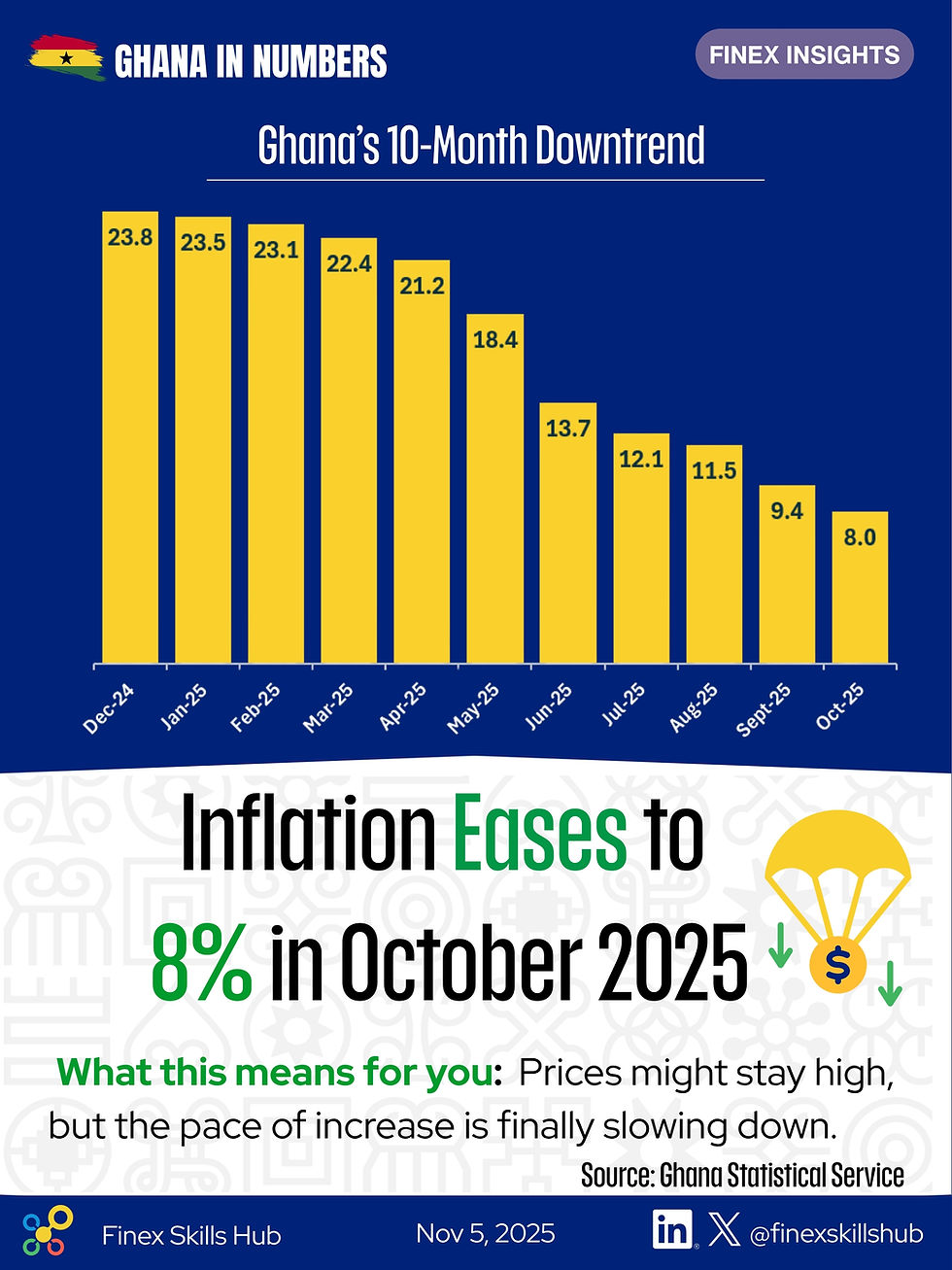Ashanti Region: Epicenter of Violence Against Anti-Galamsey Forces & Journalists (2017-2025)
- Connect Finex
- 1 day ago
- 3 min read
The fight against illegal small-scale mining (galamsey) in Ghana is not just an environmental and economic battle; it is increasingly a frontline security risk. Data compiled from news outlets between 2017 and 2025 reveals a stark and worrying trend: those tasked with enforcing anti-galamsey laws and the journalists reporting on them are facing violent attacks.
With a total of 16 recorded attacks occurred during this period, the visualized data, clearly identifies the Ashanti Region as the nation's primary hotspot, accounting for 10 of these 16 incidents.

While the Ashanti Region is the epicenter, the threat is not confined to one area. The data shows a national pattern of risk, with attacks also recorded in the Western Region (3), Central Region (1), Ahafo Region (1), and on the Bono & Savannah Region border (1). This analysis breaks down the data, examines the alarming 2025 spike, and discusses the critical implications for policy and safety.
A Troubling Spike: The Year-by-Year Data
Analysis of the attacks over the eight-year period shows that the risk, while persistent, has dramatically escalated in 2025. For long stretches, including 2019, 2020, and 2021, no major attacks were publicly recorded.
However, the year 2025 alone saw 10 attacks, a figure that tragically surpasses the combined total of all preceding years.
Here is the year-by-year breakdown:
Read the full breakdown of what happened each year, including the 10 attacks in 2025.
The 2025 surge is a critical alarm bell. It not only highlights a sharp increase in overall violence but also cements the Ashanti Region's status as the contemporary center of the conflict, accounting for 6 of the 10 attacks this year.
Mapping the Risk: A Regional Perspective
The concentration of attacks in the Ashanti Region (10) is significant, representing 62.5% of all recorded incidents. This is followed by the Western Region, another major mining hub, which recorded 3 attacks.
The incidents in the Ahafo, Central, and Bono-Savannah border regions (1 each) demonstrate that the potential for violence is widespread.
Contextualizing the Data: Factors, Not Speculation
The data confirms what happened and where, but doesn't explain why the Ashanti Region is such a hotspot. However, without speculating, we can point to plausible, data-driven factors that likely contribute to the trend.
The Ashanti Region is indisputably one of Ghana's most extensive hubs for both legal and illegal small-scale mining. It follows that a higher density of mining activity would necessitate a higher frequency of enforcement operations, such as task force raids and patrols. This increased presence of anti-galamsey task forces naturally leads to a higher number of potential confrontations.
Therefore, the high number of attacks in the region likely correlates with the high intensity of both mining and enforcement activities, rather than pointing to a single, unverified cause.
A Dual Threat: The Risk to Journalists
It is crucial to note that this data covers attacks on both task forces and journalists. While security personnel are trained for confrontation, journalists are civilians. Their role is to provide public oversight, holding both illegal operators and, at times, the enforcement bodies themselves to account.
Attacks on journalists are a direct assault on press freedom and public accountability. Such violence creates a "chilling effect," potentially intimidating reporters and news outlets from covering the true scale and impact of galamsey. This dual risk underscores the complex dangers on the ground.
Policy Implications and a Call for Protection
This data is more than a set of statistics; it is a call for urgent policy action.
Data-Driven Deployment: Security resources and operational protocols for anti-galamsey task forces must be allocated based on this demonstrated risk. The Ashanti Region clearly requires reinforced support, enhanced intelligence, and possibly revised rules of engagement to protect personnel.
Investigating the 2025 Spike: The sudden and dramatic increase in attacks in 2025 demands immediate investigation by security agencies and policymakers.
Protecting the Press: There must be a formal, high-level dialogue between state security, the Ghana Journalists Association (GJA), and media owners to establish concrete safety protocols for journalists covering galamsey.
Ultimately, the fight to protect Ghana's environment and natural resources cannot be won if the lives of the protectors and reporters on the front lines are not secured. This data serves as a critical baseline for a national reflection on how to safeguard both our environment and the people risking their lives to defend it.
Follow Finex Skills Hub for verified, data-driven insights on governance and development in Ghana.



Comments